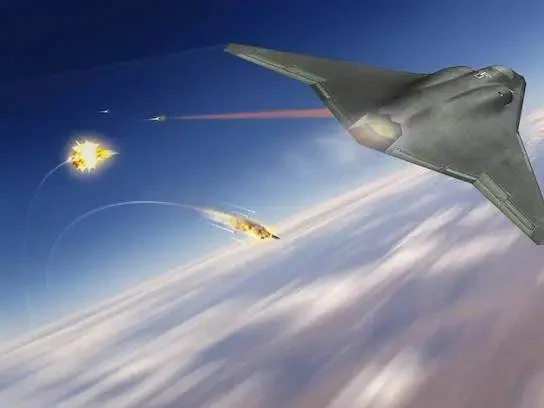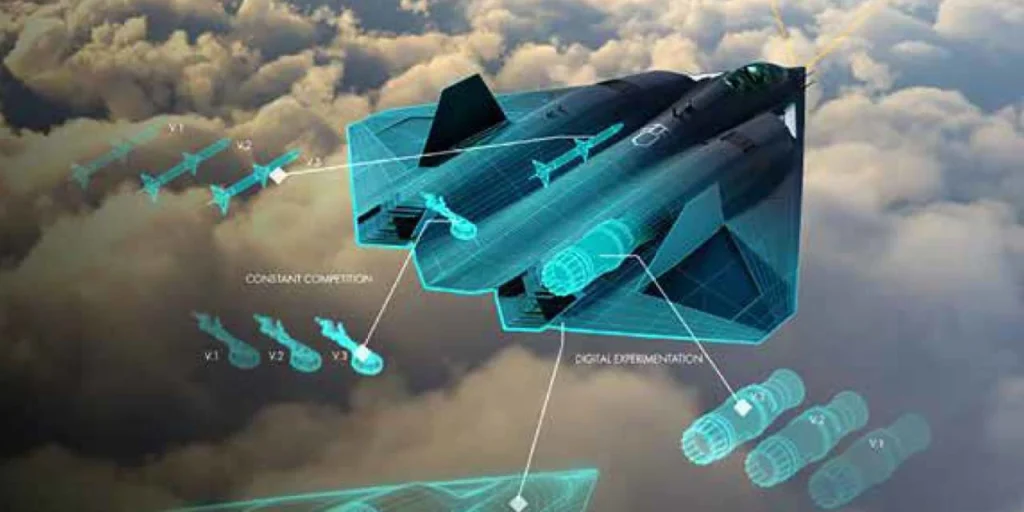The Pentagon publishes new information on the prospective NGAD (Next-Generation Air Dominance) programme. The participants are now beginning full-scale development of the next 6th generation fighter, and subsequently, they will start setting up manufacturing of an experimental product. They intend to work on these projects for several years, allowing serially produced aircraft to enter combat units by the decade’s end.
According to official data
The U.S. launched the NGAD next-generation fighter development program in 2015. Since the launch, the U.S. Air Force and its contractors have conducted various studies and determined the requirements for the future aircraft, its optimal appearance, etc. In September 2020, it was revealed that a certain technology demonstrator was built and tested in the air as part of the program. At the same time, the full development of the future aviation system did not begin.
New information about the NGAD project was announced on June 1 during the conference of the American Heritage Foundation. Secretary of the Air Force Frank Kendall III spoke at the event. The Defense News publication cites his most interesting statements on the topic of the 6th generation fighter.
According to the minister, the NGAD project is now moving to the stage of “engineering, manufacturing and development” (engineering, manufacturing and development – EMD) for building the prototype aircraft. And it will lead to mass production and delivery to the users, followed by initial operational readiness (initial operating capability – IOC).
The Technical Details of the program are not yet divulged, but the minister revealed some other interesting data. He said that NGAD is still considered not as a specific aircraft but as a family of systems or an aviation complex. The project will build several variants of aircraft on a single platform and common solutions. In particular, it is planned to develop a manned fighter and an unmanned “loyal wingman” for joint use.
End of the decade deliveries
The minister also drew attention to the timelines. According to him, it usually takes about seven years from the launch of EMD on new aircraft to initial readiness. Since the beginning of NGAD, this period has already passed, but so far, it has only been about preliminary studies. Now development begins, and you can count the years until the completion of the project. F. Kendell expects the IOC to be achieved by the decade’s end.
At the same time, the minister said he is not satisfied with the current deadlines for the completion of work. He would like new developments to go through all stages of development faster and be deployed. F. Kendall said that he was “not interested in demonstrations and experiments” unless they were vital to the project.

He said it is necessary to move on to design as soon as possible, enabling all the desired results quickly. According to the minister, a similar approach is now required in several upcoming projects. For example, it is necessary to speed up work on UAVs to accompany manned aircraft.
At the same time, it should be taken into account that this project is very complex and has so far been in the early research stages. Probably now, it will not be accelerated – for obvious reasons, the minister said.
Secret developments
The Minister for the Air Force has revealed general information about ongoing work, but the most interesting data about the NGAD program is still a secret. Only some features of the project are known, while the exact requirements like the aircraft family’s composition, appearance, etc., have not been revealed yet. In addition, holding the competitive stage and the selection of one of the contractors is not yet been reported
However, the Air Force has already presented an approximate level of prices for new equipment. In April, F. Kendall told Congress that the basic NGAD family fighter would cost hundreds of millions of dollars – more than any other modern combat aircraft or UAV.
According to known data, the aircraft platform has a modular architecture. It will be a stealth supersonic aircraft that can integrate the cockpit/pilots or install an advanced AI autopilot. It is assumed a new “adaptive” engine is being developed under the Adaptive Engine Transition Program (AETP) for NGAD.
What is known about NGAD

Open source images depict NGAD as a twin-engine “flying wing” with internal cargo compartments appear. The manned and unmanned versions differ externally only in the presence of a cockpit canopy. F-22 is being used to test technologies for the developing NGAD.
The sixth-generation manned fighter-bomber performs better than current fighters while having comparable functions. UAVs for reconnaissance and combat would be capable of working in autonomous mode or a group, including under the control of the aircraft. Representatives of the NGAD family will be able to interact with other types of equipment and work in the general control of interspecific groupings.
